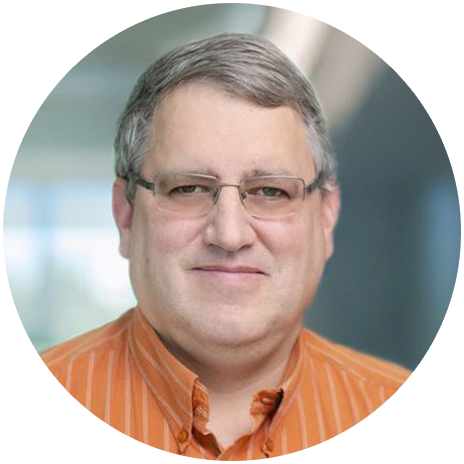Shaping the Future of Computational Science:
A Conversation with Dan Stanzione on HPC, AI, and National Research Infrastructure
In the rapidly evolving landscape of high performance computing, artificial intelligence, and quantum technologies, few leaders have shaped the trajectory of open science infrastructure as profoundly as Dr. Dan Stanzione. As Executive Director of the Texas Advanced Computing Center (TACC) and Associate Vice President for Research at The University of Texas at Austin, Stanzione has built a career on a foundational principle that has guided supercomputing development for decades.
Stanzione's approach to building large-scale computing infrastructure stems from a hard-learned lesson about putting users first. "Ultimately, we're building large-scale computing to do science," he explains. "It's less about what we, as computing people, might think is cool as the latest and most interesting technology, and more about what is useful for delivering science." This philosophy was crystalized when TACC won a major system competition worth $120 million. After his presentation, another large center director approached him with what he called a backhanded compliment: "Man, I wish I had the guts to be as boring as you were on this design." Stanzione's response was characteristically pragmatic, "We didn't put in any of the newfangled, crazy stuff because it's all more expensive and it doesn't work as well."
This user-centric approach has driven TACC to hire computational scientists rather than traditional IT professionals to lead systems teams. The strategy ensures that infrastructure decisions are driven by what computational scientists actually need to accomplish, as opposed to technological novelty alone.
Building National Research Ecosystems
TACC's influence extends far beyond its physical systems to encompass a national research ecosystem that supports over 3,000 projects annually across 450+ institutions. From research universities to community colleges, TACC provides computational resources that enable both cutting-edge research and workforce development. The center operates on a hub-and-spoke model that recognizes the importance of regional networks and local expertise. "We can scale up big computers to run tens of thousands of users, but it's awfully hard for me to scale the person down the hall from you who you can go ask about stuff," Stanzione explains. This ecosystem approach ensures that computational resources are accessible not just technically, but through human networks of expertise and support.
Regional research and education networks play a crucial role in this ecosystem, providing both the physical infrastructure for data transfer and the human networks necessary for knowledge dissemination. As scientific workflows increasingly rely on remote resources and collaboration, these networks become "basically air"—essential but invisible infrastructure that enables modern research.
Navigating the AI Revolution in Scientific Computing
The explosion of artificial intelligence has fundamentally transformed the computational landscape, creating both unprecedented opportunities and complex challenges for research infrastructure. Stanzione describes the shift from gradual adoption to an "overwhelming avalanche" following ChatGPT's release, forcing centers like TACC to rapidly adapt their systems and services.
"Five, six years ago maybe 40% of our users could use GPUs. Now maybe it's 65%," Stanzione notes. This dramatic shift informed the design of Vista, TACC's AI-centric system built on NVIDIA Grace Hopper architecture, which serves as a bridge to prepare users for the next generation of leadership-class computing. However, the AI revolution presents a deeper challenge for the entire scientific computing ecosystem. "How are we going to keep traditional scientific computing going in a world where all the chips are built for AI?" Stanzione ponders. The answer lies in adapting to commodity AI components, much like the transition from custom supercomputing silicon to commodity microprocessors that began in the 1990s with the Beowulf project.
The fundamental difference between AI and traditional scientific computing lies in precision requirements. While scientific simulations demand 64-bit floating-point accuracy, AI algorithms can operate effectively with 8-bit or even 4-bit precision. This creates both challenges and opportunities. For example, Stanzione explains, "If these things are optimized for 8-bit integers, how do we make it look like we're doing 64-bit floating point?" The solution requires clever algorithms and hardware adaptations that could ultimately deliver superior performance even for traditional scientific workloads.
The Horizon Supercomputer: Enabling Discovery at Scale
TACC's upcoming Horizon supercomputer, scheduled for deployment in 2026 as part of the National Science Foundaion's (NSF) Leadership-Class Computing Facility, represents a quantum leap in computational capability. Expected to deliver 10× the performance of Frontera for traditional workloads and 100× for AI applications, Horizon will feature the largest public deployment of NVIDIA Blackwell processors available to researchers without cloud-like pricing.
Stanzione and his team have already identified 11 flagship projects that will launch with Horizon, spanning astronomy, materials science, molecular dynamics for drug discovery, seismology, and natural disaster prediction. But the most exciting aspect of these systems, he notes, is their unpredictability: "Discovery is by its nature somewhat unpredictable. We will be surprised, and something will happen." This element of surprise has characterized TACC's impact throughout its history. The center has supported work by four Nobel Prize winners, including David Baker from the University of Washington, who has been using TACC systems since 2005 for protein folding research that ultimately contributed to his 2024 Nobel Prize in Chemistry.
The Convergence Challenge: Power, Efficiency, and Innovation
The rapid growth of AI computing has created unprecedented challenges in power consumption and efficiency. Stanzione estimates that current AI development focuses primarily on being first and fastest, with little attention to efficiency—a luxury that scientific computing has never been able to afford. "We've never had the kind of money to throw around the hundreds of billions that they're throwing around in the AI space," he observes.
The solution, Stanzione argues, lies in software optimization rather than simply building more data centers. He points to DeepSeek's breakthrough in February 2024 as a prime example. By focusing intensively on software optimization rather than raw scaling, the company achieved 3-4× performance improvements while using significantly less power. "If your argument is, can I build $400 billion of data centers or with $10 million in software, where can I make that $200 billion in data centers? It was a pretty obvious answer to me," reflects Stanzione.
The industry faces fundamental limits in both silicon scaling and precision reduction. As transistor features approach atomic scales and precision requirements bottom out, the field must turn to architectural innovations, custom silicon designs, and potentially quantum accelerators to maintain the pace of computational advancement.
Quantum Computing: The Long View
While quantum computing generates significant attention and frequent questions about deployment timelines, Stanzione maintains a characteristically practical perspective. "I always go back to when I have users that actually want to use it," he responds to questions about quantum system deployment. "Right now you deploy big quantum systems to learn a lot about how to run quantum systems, and there's nothing wrong with that, but it doesn't serve my end science users that ultimately pay the bills."
Looking forward, Stanzione sees quantum accelerators as more likely than general-purpose quantum machines in the medium term. This hybrid approach aligns with his user-first philosophy to deploy quantum technologies when they solve real scientific problems more effectively than classical alternatives.
The Workforce Imperative
Perhaps no challenge is more critical than preparing the next generation of researchers and technologists for a world where AI, HPC, and quantum technologies converge. For TACC, workforce development is integral to advancing scientific progress. Many of its 9,000 annual users are first-year graduate students, making continuous education and onboarding essential.
Stanzione frames the workforce challenge in terms of historical precedent, noting that most economic growth over the past century has been driven by technology. From agriculture's transformation through improved productivity to the creation of entirely new industries, technological advancement has consistently created more jobs than it has displaced.
The key insight from this historical perspective is that fundamental research—often with no apparent practical application—ultimately enables transformative innovations. "In 1905 when doing work in relativity, Einstein did not think one day, if I do this right, I'll be able to get a taxi from my phone," Stanzione notes, yet GPS requires relativistic corrections to function accurately.
This long-term view underscores the importance of sustained investment in research infrastructure and education. Stanzione warns that declining government investment since the 1970s threatens the innovation ecosystem that has driven American technological leadership and cautions, "We just look at the last bit of the product and not all the things that it took to get there."
Looking Ahead: Challenges and Opportunities
The coming years will test the scientific computing community's ability to navigate several converging challenges. The commercial value of AI threatens to overwhelm traditional scientific computing through competition for hardware, talent, and attention. Power consumption continues to grow at unsustainable rates. Fundamental limits in silicon scaling and precision reduction approach rapidly.
As Forough Ghahramani, Ed.D., Assistant Vice President for Research, Innovation, and Sponsored Programs at Edge, observes, "Dr. Dan Stanzione's leadership at TACC continues to shape the future of advanced computing in this country. His vision, spanning HPC, AI, and quantum, is driving open science forward at unprecedented scale. As a thought leader and builder of national research infrastructure, his work through systems like Frontera, Vista, and the upcoming Horizon supercomputer reflects an unwavering commitment to accessibility, excellence, and innovation."
Yet Stanzione remains optimistic about the field's ability to adapt and innovate. The same community that successfully transitioned from custom supercomputing hardware to commodity clusters in the 1990s now faces another architectural transition. Success will require the same combination of technological innovation, pragmatic decision-making, and unwavering focus on scientific utility that has characterized high-performance computing's evolution.
For higher education leaders, Stanzione's message is clear: investment in computational infrastructure and workforce development is not optional but essential for maintaining America's position as a global leader in scientific innovation. The discoveries enabled by tomorrow's computational tools may be unpredictable, but the need for those tools is certain.
As TACC prepares for the Horizon era and the broader scientific community grapples with the AI revolution, Dan Stanzione's user-centric philosophy offers a valuable guide, “Stay focused on what serves science, remain adaptable to technological change, and never lose sight of the human element—the researchers, students, and technologists who ultimately determine the impact of any computational infrastructure.”
The future of open science depends not just on building bigger, faster computers, but on building systems that serve the scientists who will use them to unlock the next century of discovery.


